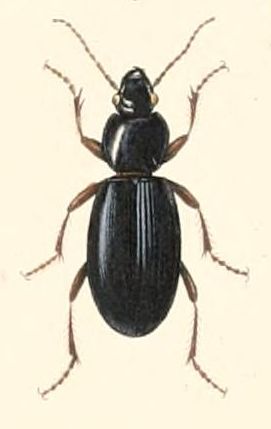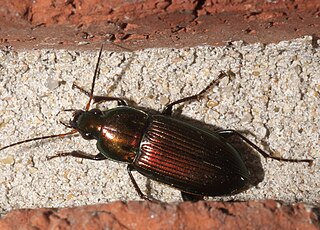
Opus vermiculatum is a method of laying mosaic tesserae to emphasise an outline around a subject. This can be of one or more rows and may also provide background contrast, e.g. as a shadow, sometimes with opus tessellatum. The outline created is often light and offset by a dark background for greater contrast. The name opus vermiculatum literally means "worm-like work", and has been described as one of the most demanding and elaborate forms of mosaic work. Usually opus vermiculatum is meant to put emphasis on the main design and foreground details of a work, using a smooth and flowing halo-effect. Sometimes it was used only around the head of a figure. The tesserae used were often square but can be variously shaped.

Opus tessellatum is the Latin name for the normal technique of Greek and Roman mosaic, made from tesserae that are larger than about 4 mm. It is distinguished from the finer opus vermiculatum which used tiny tesserae, typically cubes of 4 millimetres or less, and was produced in workshops in relatively small panels which were transported to the site glued to some temporary support. Opus tessellatum was used for larger areas and laid down at the final site. The two techniques were often combined, with small panels of opus vermiculatum called emblemata at the centre of a larger design in opus tessellatum. The tiny tesserae of opus vermiculatum allowed very fine detail, and an approach to the illusionism of painting. There was a distinct native Italian style of opus tessellatum using only black on a white background, which was no doubt cheaper than fully coloured work.

Calosoma sycophanta, the forest caterpillar hunter, is a species of ground beetle belonging to the family Carabidae.

Calosoma is a genus of large ground beetles that occur primarily throughout the Northern Hemisphere, and are referred to as caterpillar hunters or caterpillar searchers. Many of the 167 species are largely or entirely black, but some have bright metallic coloration. They produce a foul-smelling spray from glands near the tip of the abdomen. They are recognizable due to their large thorax, which is almost the size of their abdomen and much wider than their head.

Pterostichus is a very large genus of ground beetles with a Holarctic distribution in the subfamily Harpalinae. It has over 1,200 species. The beetles are predatory, but sometimes feed on strawberries. They can be found under rocks and prefer slightly moist, sandy soil although preferences differ between species.
Keratosis pilaris atropicans is a group of idiopathic genodermatoses that consists of three unique clinical entities: atrophoderma vermiculatum, keratosis follicularis spinulosa decalvans, and keratosis pilaris atrophicans faciei.

Pterostichinae is a subfamily of ground beetles. It belongs to the advanced harpaline assemblage, and if these are circumscribed sensu lato as a single subfamily, Pterostichinae are downranked to a tribe Pterostichini. However, as the former Pterostichitae supertribe of the Harpalinae as loosely circumscribed does seem to constitute a lineage rather distinct from Harpalus, its core group is here considered to be the present subfamily and the Harpalinae are defined more narrowly.

Valeria Straneo is an Italian long-distance runner, winner of the silver medal at the 2013 World Championships in Athletics and Italian record holder in the marathon.

Abacetus is a genus of beetles in the family Carabidae, distributed across Africa, Asia and Australia, with a single European species. It contains the following species:
Ophonichius is a genus of beetles in the family Carabidae, containing the following species:

Caelostomus is a genus of beetles in the family Carabidae. It contains the following species:
Crenulostrigus is a genus of beetles in the family Carabidae, containing the following species:
Pachyroxochus is a genus of beetles in the family Carabidae, containing the following species:
Platyxythrius is a genus of beetles in the family Carabidae, containing the following species:
Strigomerus is a genus of beetles in the family Carabidae, containing the following species:

Blennidus is a genus in the beetle family Carabidae. There are more than 120 described species in Blennidus, found in South America.
Metius is a genus of beetles in the family Carabidae, containing the following species:

Ophiomusium is a genus of brittle stars.

Pterostichini is a tribe of ground beetles in the subfamily Harpalinae. There are about 180 genera and more than 3,800 described species in Pterostichini.











